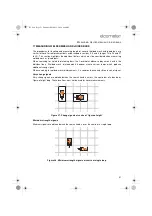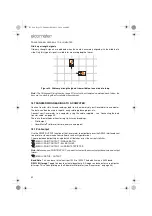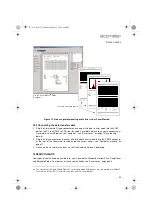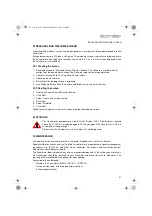
59
H
ALF
-
CELL
PROBES
R
20 HALF-CELL PROBES
Two types of half-cell probe are available for your Covermeter. The probes can be easily identified
by colour:
•
Copper-Copper Sulphate (Cu-CuSO
4
): Yellow
•
Silver-Silver Chloride (Ag-AgCl):
Blue
20.1 Wetting your probe
For your probe to function properly the ceramic sensing end (the electrode) must be wet. To get a
good wet electrode, just place the electrode in tap water for two to three minutes; this will usually
be sufficient to keep the sensor going all day. Keeping the plastic end cap on the sensor when it is
not being used will also help to keep the electrode wet. During periods of extended storage, place
a small amount of water in the end cap before pushing the cap onto the probe.
20.2 Care of your probe and cables
The probes do not require any maintenance; they do not need recharging and are sealed for life.
Any mud or grit should be removed from the electrode by swirling the electrode back and forth in a
container of warm, soapy water and then brushing with a wet rag. The soapy water will not harm or
contaminate the electrode.
Always check that the connecting cables are free of damage such as cuts and tears in the sheathing
before use.
The Copper-Copper Sulphate half-cell probe is intentionally
filled with a reserve of saturated Cupric Sulfate solution
combined with solid Cupric Sulfate crystals to ensure a
minimum 10-year design life.
Under certain circumstances a very small percentage of this
reserve can leach out from the ceramic sensing tip of the
half-cell producing crystals as shown in the photograph.
This does not affect the performance of the cell. The crystals
should be removed by washing in distilled water.
20.3 Temperature
Do not allow the probe to freeze. Although freezing will not damage your probe, it will be impossible
to obtain reliable measurements while in this state. All measurements are affected by temperature;
if you take two readings in identical conditions, one in the summer at 29°C (85°F) and the other in
the winter at 1°C (34°F), the half-cell potential readings will be different.
Each probe is tested at 25°C to be within ±10 mV of a standard Calomel reference cell. The
following values relative to a standard Calomel cell are used as the test limits during manufacture:
Lower limit
Reference value for Calomel
Upper limit
Copper-Copper Sulphate (Cu-CuSO
4
) +50 mV
+60 mV
+70 mV
Silver-Silver Chloride (Ag-AgCl)
-50 mV
-40 mV
-30 mV
20.4 Shelf life
Your probe does not degrade when stored.
331.book Page 59 Thursday, March 12, 2009 9:46 PM










































